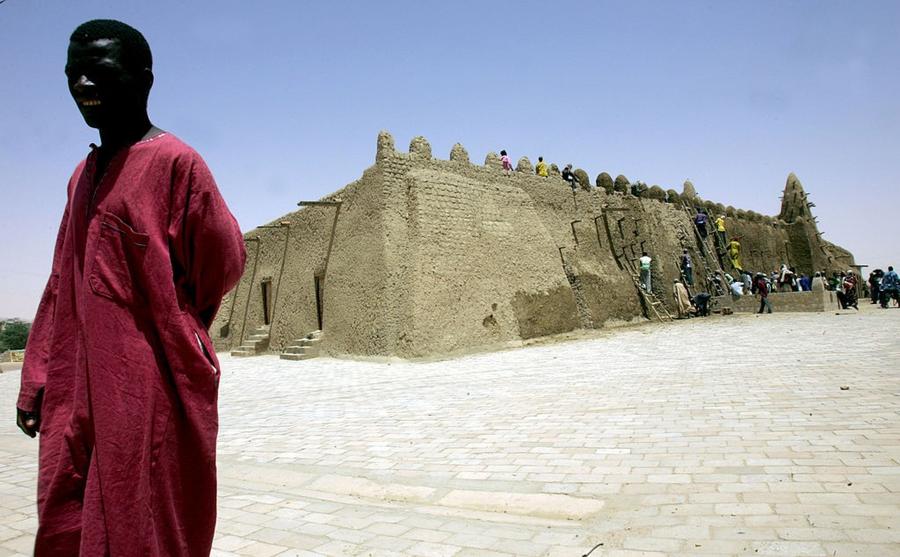In the year 1312, African King Mansa Musa was richer than anyone could comprehend. He ruled the Mali Empire in the 14th century. The land in his kingdom was laden with insane amounts of natural resources, mostly gold, giving him great wealth. In fact, there is really no way to put a truly accurate number on his fortune. Musa's wealth was so enormous that he makes Bill Gates, Jeff Bezos, Carlos Slim Helu, and Warren Buffett look like paupers. Actually, King Mansa Musa was worth more than all of those men combined and then some.
Musa Keita I was crowned King in 1312 and was bestowed with the name Mansa, which means sultan or emperor. At the time, most of Europe was experiencing a great famine, brought on in part by the fact that much of the Continent was engaged in a number of civil wars. On the other hand, Africa was thriving and it was an era of wealth and riches for that continent. While he was in power, Mansa Musa expanded the borders of his kingdom greatly. He grabbed the city of Timbuktu for his empire and took power over all of Gao. At its height, Musa's empire stretched over 2,000 miles. He further augmented his fortune by controlling key trade routes between the West African coast and the Mediterranean.

ISSOUF SANOGO/Getty Images
The rest of the world heard about and experienced King Mansa Musa's great wealth starting in 1324. As a devout Muslim, he made the almost 4,000 mile pilgrimage to Mecca. And let me put it this way, King Mansa Musa didn't fly coach. He did not travel on bargain fares. Musa assembled a caravan that was so many miles long you could not see the end of it. He travelled with an entourage of tens of thousands of soldiers, civilians, and slaves. He was accompanied by 500 heralds dressed in fine silks with gold staffs as well as many camels and horses. His caravan carried more gold bars than reside at Fort Knox. In fact, some estimate that he traveled with 100 camels, each carrying 300 pounds in gold as they trekked across Africa and the Middle East for several years.
When the King made a pit stop in Cairo, he spent so much gold, that he alone was responsible for creating an economic meltdown. The sudden influx of gold from his visit devalued the currency locally. It took Cairo many years to completely recover from the currency crisis King Musa's visit caused.
King Musa wasn't only interested in material riches; he also wanted to leave a legacy. During his pilgrimage to Mecca, he took a focused interest in Timbuktu. The King was responsible for the urbanization of the city. He built schools, mosques, and the ancient learning center the University of Sankore. King Musa also built the legendary Djinguereber Mosque in Timbuktu, which is still standing today.
King Musa reigned over the Mali Empire for 25 years. He died in 1337, not long after his return from his pilgrimage to Mecca. He was succeeded by his son, Maghan I. To this day, nearly 700 years later, King Mansa Musa's influence remains. There are libraries, mausoleums, and mosques that stand as a testament to his reign and the golden age of Mali's history.
So how much was King Mansa Musa worth? The closest estimates, based on the gold he took with him to Mecca and other assets, put his net worth at the modern equivalent of $400 billion.
/2015/02/king-e1422996844217.jpg)
/2017/07/Jeff-Bezos.jpg)
/2018/01/bezos.jpg)
/2018/07/jeff.jpg)
/2017/11/bezos.jpg)
/2021/11/musk-vs.jpg)
/2012/06/GettyImages-73884432.jpg)
/2019/01/Kennedy-Montgomery.jpg)
/2011/03/Michelle-Trachtenberg.jpg)
:strip_exif()/2020/06/taylor.png)
/2020/04/hailey-joel.png)
/2021/12/Claudia-Schiffer.jpg)
/2022/07/david-thomson.jpg)
/2018/06/Mike-Lindell.jpg)
/2015/04/jh.jpg)
/2009/12/Jimmy-Goldstein.jpg)
/2016/04/GettyImages-524083760.jpg)
/2021/10/ethan-2.jpg)
/2011/01/Aaron-Rodgers.jpg)
/2010/12/GettyImages-96351810.jpg)
/2015/01/GettyImages-151346507.jpg)
/2010/05/Rudy-Giuliani.jpg)
/2020/06/julian.png)